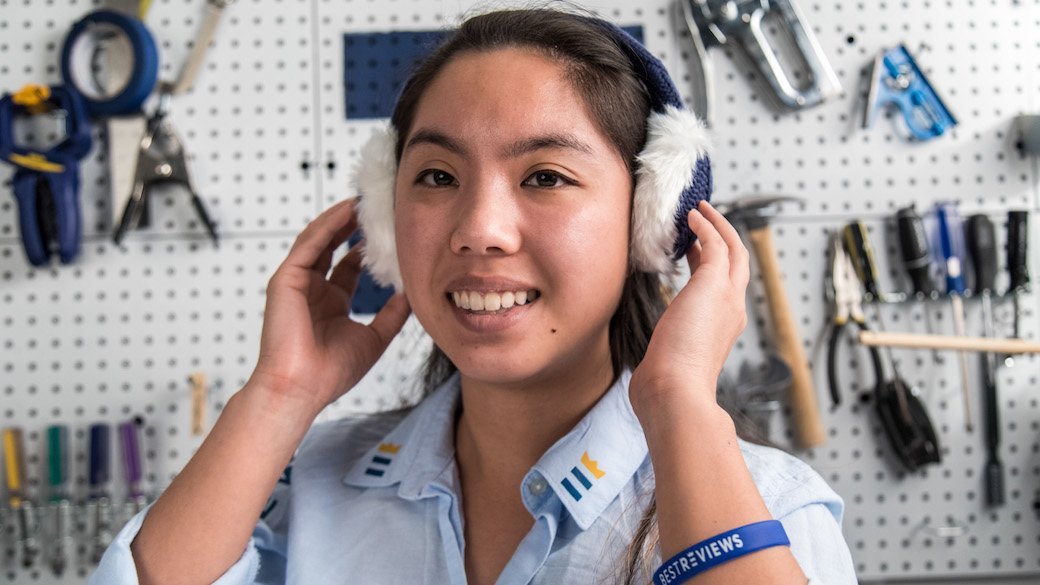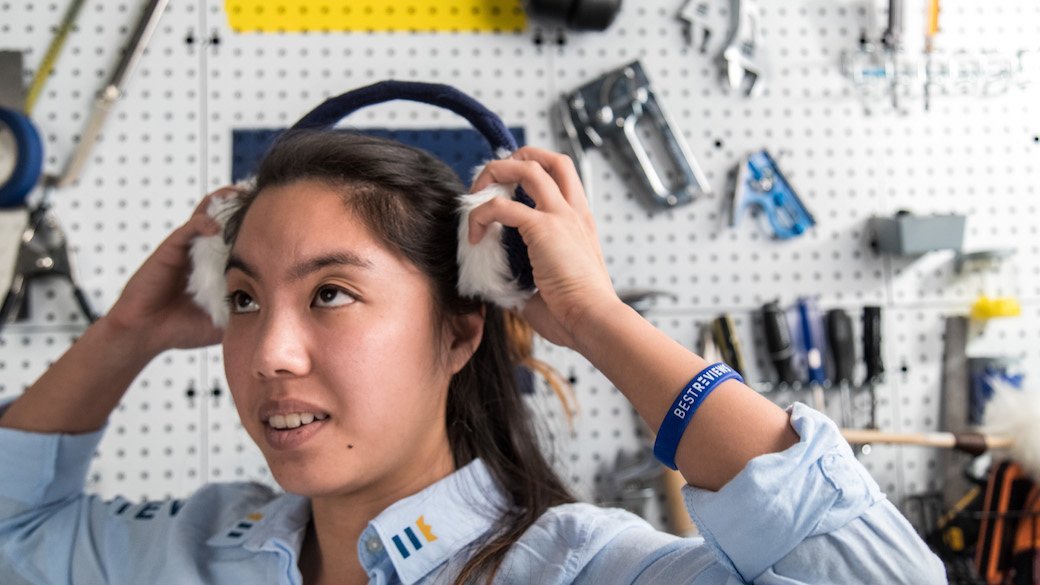Buying guide forBEST WOMEN’S EARMUFFS
Winter can be a drag for the woman who puts a lot of time into her look each morning. If you don’t want to ruin your newly coiffed hair, but you do want to keep your ears safe from frostbite, there is a solution. A pair of cozy earmuffs will keep your ears warm without messing with your messy bun.
Earmuffs are a great alternative to hats for cold weather excursions and avoiding “hat hair.” Whether you’re heading to the train or going for a run in the great outdoors, a pair of earmuffs can protect your ears from the cold. They don’t cover the top of your head, which allows for better airflow and makes them ideal for outdoor fitness activities. If you tend to heat up quickly when you work out, even in the cold, earmuffs are the answer.
There are plenty of earmuff styles and options available to suit different needs. Runners who want total ear protection from frosty winds can find breathable options that won’t slip or slide on the go. Commuters who wait outside for public transit can enjoy cozy, stylish work-appropriate earmuffs. When a hat doesn’t entirely cover your ears, extra warmth around your sensitive earlobes is critical.


With individual earmuffs, the most important consideration is a secure fit. If the fit is too loose, you’re likely to lose them.
KEY CONSIDERATIONS
As you’re browsing for a pair of earmuffs, consider the following:
Type
There are a few different ear muffs designs that each have their pros and cons.
- Over the head: The classic earmuff design is like a headband with two cozy pads to cover your ears. This type of earmuff stays put and is often adjustable, which is helpful if you have a head that’s smaller or larger than the norm. The drawback? The band isn’t comfortable for everyone. Pressure points may cause headaches or irritation. The band may also get in the way of some hairstyles.
- Behind the head: This style of earmuff is connected like the over-the-head models, but it is intended to be worn with the band behind the head, low and around the neck. This design reduces pressure on the head and isn’t as likely to cause headache pain. These earmuffs are adjustable and compact, so they’re easy to pack for travel. They’re ideal for winter sports, too. However, behind-the-head earmuffs may not be compatible with hairstyles that sit close to the nape of the neck.
- Individual: These earmuffs are individual ear coverings that fit around each ear. There is no band or connection between the pads. They’re the best option for those who want to avoid messing up their hairstyle.
Size
In general, earmuffs are one size fits all, but certain brands may offer special youth sizing. The pad sizes vary according to the manufacturer, so be sure the covering is enough to protect your ears.
- Fit: Earmuffs should fit comfortably without putting pressure on the head or the area behind the ears. The wrong fit might turn into a literal headache, so if you choose a model with a band, check that the fit is secure but not overly snug. You should also still be able to hear when wearing your earmuffs. If the fit around the ears is too tight and blocking your hearing, that could spell trouble, especially if you’ll be wearing the earmuffs while running or walking in highly trafficked areas.


DID YOU KNOW?
Some earmuffs have removable liners that can be washed separately.
STAFF
BestReviews
WOMEN’S EARMUFF FEATURES
Style: There are tons of style options in the earmuff world, from models that work well with formal attire to sportier variations for outdoor activities like skiing or hiking. You’ll find earmuffs available in a host of colors from black to multicolored.
Adjustability: Earmuffs with a band or connection between the pads are often adjustable. A quick pull and click changes the length of the band to accommodate different head shapes and sizes. If you have a very large or small head, pick earmuffs that are adjustable so you can achieve the perfect fit.
Material: Earmuffs are made of a variety of materials that provide windproofing, warmth, and breathability. For exercising outdoors, wicking properties are especially important. In bitterly cold climates, a windproof shell is essential. If you’re purchasing earmuffs to keep your ears warm, pick a pair made with Thinsulate for thermal protection. Other materials that you may find include polyester and faux fur. Cotton is a poor choice because it absorbs moisture, doesn’t dry very quickly, and isn’t as warm in cold temperatures.
Washability: Check the care tag to find earmuffs that are easy to wash. If you plan on using them for outdoor fitness, they’ll eventually become sweaty and grimy, so pick a pair that can be thrown into the washing machine. If you love the look of white earmuffs, pick some that are easy to clean because they’ll show the dirt more than other colors.
Fold up: Some earmuffs fold up into a compact package so they’re easy to fit inside a jacket pocket. Individual earmuffs are the easiest to travel with and take up the least room.
Built-in headphones: Do you love listening to music on the go? Pick a pair of earmuffs that double as headphones. Connected via a wire or Bluetooth, these allow you to keep your ears nice and toasty while listening to tunes. There’s no need to contend with a mess of wires in your handbag or wear earbuds under your earmuffs. Just be careful that you can still hear what’s going on around you.
WOMEN’S EARMUFF PRICES
Inexpensive
For less than $10, you’ll find a variety of earmuff styles, including over the head and behind the head. Inexpensive earmuffs are typically made of cheaper materials and not designed for athletic activities.
Mid-range
Between $10 and $30, expect to be able to choose from multiple styles and more colors and designs. Modestly priced earmuffs are also more durable than budget options.
Expensive
Pricier earmuffs, up to $150, usually include brand-name options made with high-quality materials or models that double as headphones.
TIPS
- Protect your ears from the cold. Like your nose, your ears get cold more quickly than other parts of your body because there’s less blood flow to the area. That’s why, even if it’s not freezing where you live, a pair of earmuffs is a valuable accessory when the weather gets chilly.
- Double up on accessories. If it’s very cold where you live, wear earmuffs under a hat for added protection.
- Wear earmuffs when riding a bike. Earmuffs are an excellent option for cyclists who must contend with plenty of wind but a helmet just doesn’t provide enough coverage. Choose earmuffs that fit without having to loosen your helmet.
- Make sure the earmuffs fit correctly. Super-fluffy earmuffs are attractive, but some models are so puffy that they may not sit right on all ears. A loose fit can invite wind inside, which is definitely not ideal.
- Wear your eyeglasses when trying on earmuffs. If you wear glasses, some earmuff styles will fit better than others. Behind-the-head options or individual pads are suitable for those who wear glasses.


Unisex models are designed to fit both men and women, but they may not fit smaller heads. Some women may prefer the fit of earmuffs sized for youth.
FAQ
Q. Wearing a headband around my head gives me a headache. Will I have the same problem with earmuffs?
A. Not necessarily. Choose earmuffs without a band and you’ll prevent nasty tension headaches. If you prefer the appearance of a banded earmuff, the band shouldn’t strangle the top of your head. The fit should be secure but not so loose that the band slides down your head.
Q. I’m a runner and want to keep my ears warm while running, but I hate continually having to adjust a hat. Which earmuffs should I buy?
A. Choose earmuffs that fit snugly and don’t flop around as you run. Behind-the-head earmuffs are great since they’ll keep the back of your head warm, too. Pick a pair with breathable fabric that wicks away moisture so your earmuffs don’t get sweat-logged. The earmuffs should provide warmth, but you shouldn’t really notice that you’re wearing them at all. They should also allow you to hear your surroundings.
Q. If I don’t wear a hat, won’t I lose heat from the top of my head?
A. You actually lose heat everywhere on your body. Exposing any part of your body to the cold will result in heat loss. The top of your head is not unique. Earmuffs are useful for physically demanding activities where a hat might provide too much warmth and prevent ventilation.






